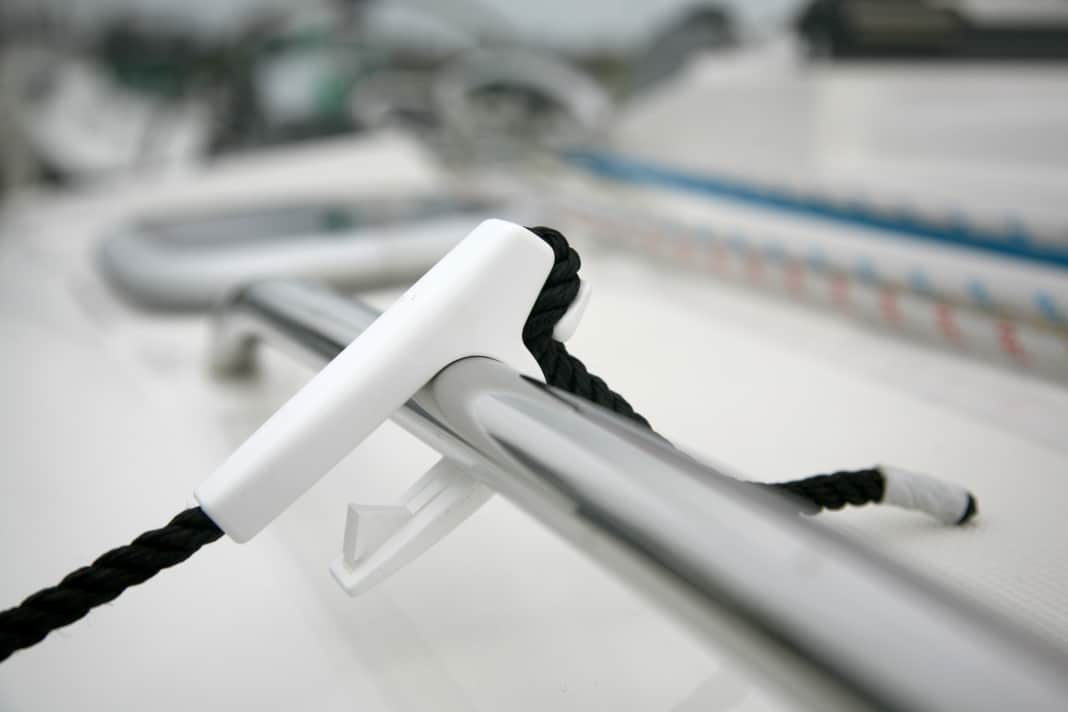





Hook lifehack 1: More storage space thanks to sturdy hooks and fixings from the sanitary range

There are usually not enough sturdy hooks on board for hanging heavy items. An oilskin jacket with a multitool and a head torch in the pockets can quickly become quite heavy. Anchoring additional hooks securely in the bulkhead requires screws with larger diameters. We were reluctant to drill large holes in the bulkhead, which is why we came up with a simple and reversible solution. We positioned simple stainless steel hooks around the mast support and fixed them with a stainless steel hose clamp. A suitable size had to be found or cut from an endless hose clip. The support in front of the main bulkhead is a good place to hang clothing. With our method, the number and spacing of the hooks can be varied as required. To simplify the installation, we attached the hooks with double-sided adhesive tape and then fixed them permanently with the hose clip.
Dr Michael Rost, Jena
Hook lifehack 2: Shower hooks hold the sail dress in place

Improvisation is often better than the previous solution: the vertical front fastener in front of the mast on our older sailcloth tore during our holiday. I cut it out and pulled loops with cable ties (the ones with a plastic barb) through the tarpaulin material. I then connected the two sides with hooks from a shower curtain to close the sail dress. We kept the construction; it still works well and hardly cost anything.
Jochen Peschke, Hamburg
Hook lifehack 3: Calmed cups

We store our coffee cups hanging on hooks in the pantry. This means they don't take up any space in the locker and are always ready to hand and stowed away seaworthy. When sailing in heavy seas, however, there was often annoying rattling. We were able to remedy this with brown door seals from Tesa. Two strips of this self-adhesive rubber were attached horizontally to the wooden wall behind the cups and have worked wonderfully as noise damping ever since. The rubber overlay also prevents the paintwork from being scratched and minimises the risk of breakage.
Ekkehard Marquardt, Hanover
Hook lifehack 4: Rubber lips against rattling

To prevent the boat hook from rattling in its ring-shaped attachment to the backstay, we used cable ties (alternatively rigging twine) to attach a rubber plate about two millimetres thick to the ring. We punched a hole in the plate that is slightly smaller than the diameter of the boat hook and cut a few slots in the sides. The rubber lips give way when the boat hook is pushed in and pulled out, otherwise they hold it firmly in the centre.
Bernhard Uhrmeister, Hanover
Do you have any advice for other sailors?
We will honour the publication of your lifehack with 50 euros. Please add photos or sketches. We also need your address so that we can send you a crossed cheque.
Submissions to: Editorial office YACHT, Gänsemarkt 24, 20354 Hamburg or: mail@yacht.de.
